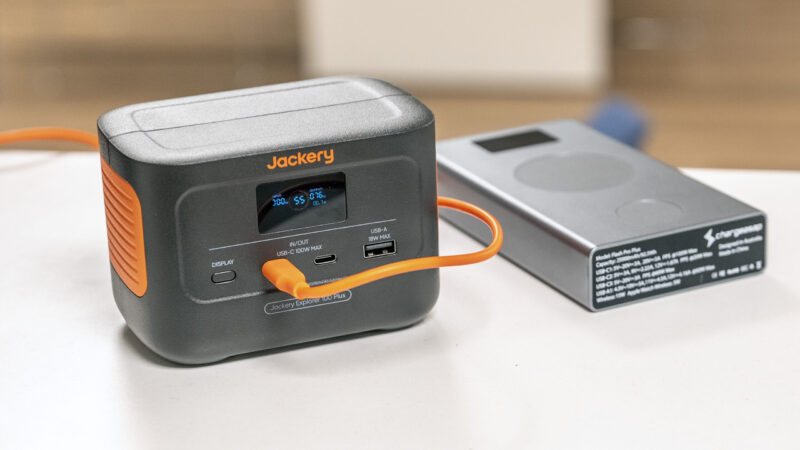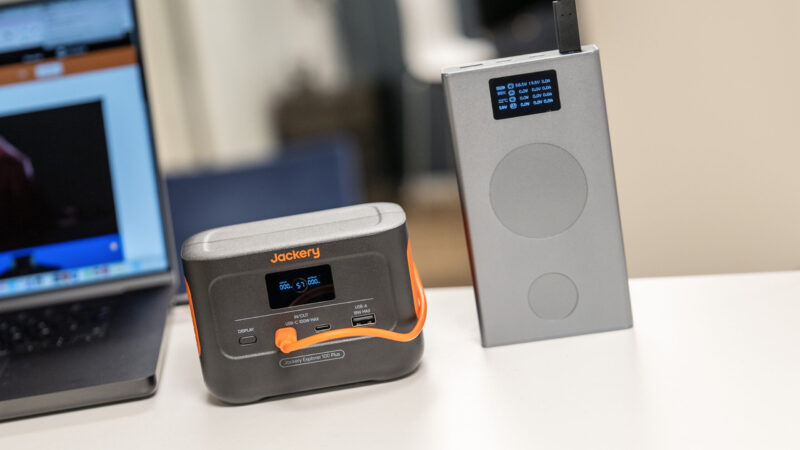Jackery is a name you should memorise if you’re interested in backup power. Headquartered in California but with a factory in China, they are a competitor to EcoFlow – the market leader in the sector. Jackery has power stations in all sorts of sizes, and can be recommended to people who want to protect their electrical appliances against power outages, or who want to power their electrical tools in the forest or elsewhere. Preferably with solar panels as an energy source.
Compared to Jackery’s other products, the Explorer 100 Plus is a tiny power station designed to go everywhere, whether it’s a cabin trip, hiking, the beach or backpacking.
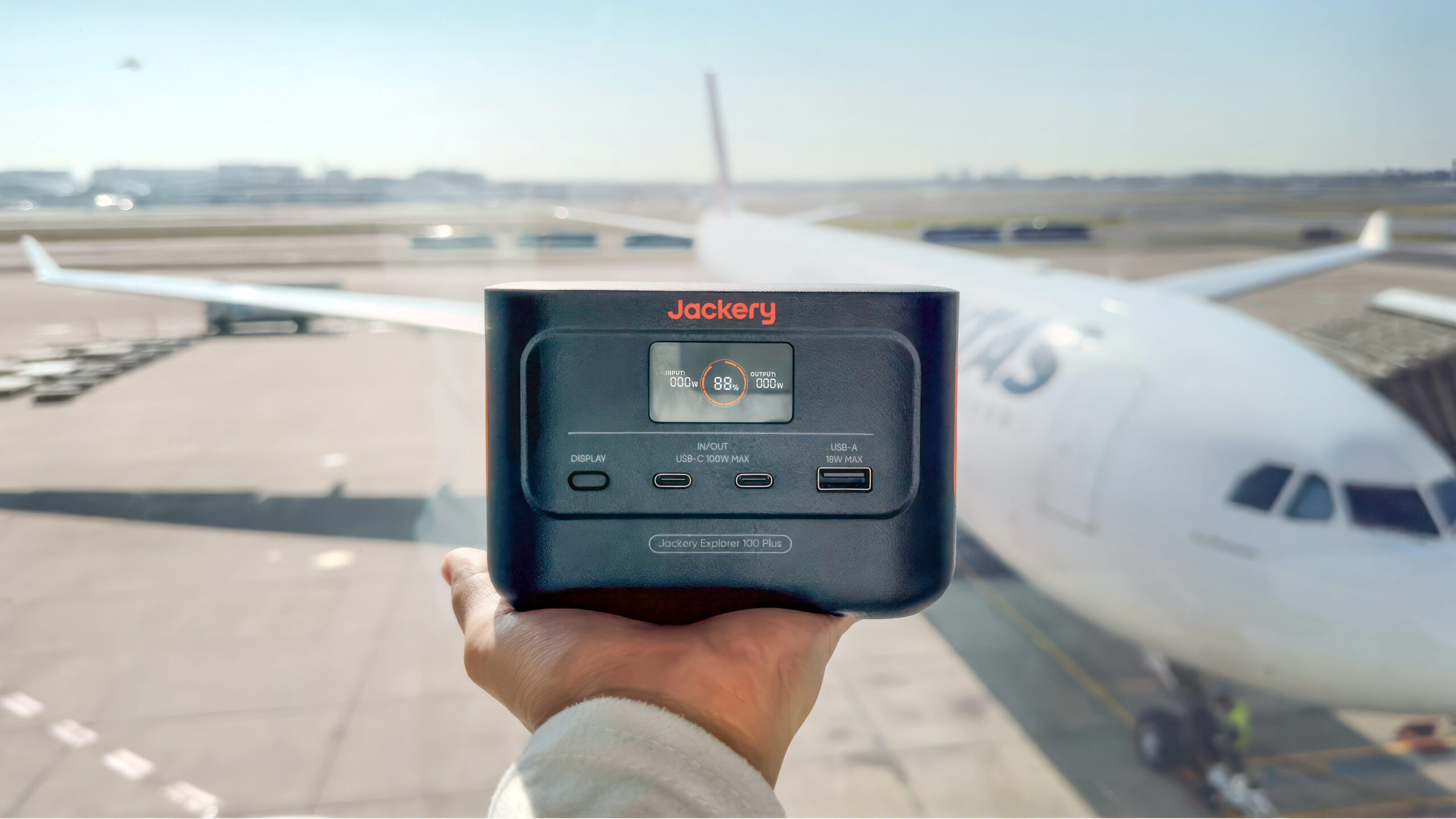
Or is it a giant power bank?
But instead of a tiny power station, you can also choose to think of the Explorer 100 Plus as a giant USB power bank. It has exactly the same functions, because you don’t get an AC output or any kind of app control for power management.
The weight is just under a kilo, and the capacity of 99.2 Wh (31,000 mAh) is just within the limits of what you can take on board in your hand luggage on an aeroplane. That means you can charge a Google Pixel 8 Pro or Samsung Galaxy S23 Ultra five times and an iPhone 15 Pro Max almost six times. iPad Pro can be charged 3.4 times, while typical gaming laptops can be charged exactly once. Because they comply with the same legislation as the Jackery Explorer 100 Plus emergency charger, specifically to be allowed on aeroplanes.
2000 charging cycles
The battery is of the LFP type, which has a lower risk of explosion or overheating than a standard lithium-ion battery. It is also guaranteed to last for over 2,000 charge cycles before the capacity is reduced to less than 80 per cent. Which is reassuring, as regular lithium-ion typically only lasts around 500 cycles.
Connections
Two USB-C ports both provide 100 watts each. However, if you use both at the same time, the total power output is only 110 watts. That’s still enough for fast charging of tablets, laptops and newer mobile phone models that support fast charging. An additional 18 watts of USB-A power is available for older phones and devices without USB-C.
The built-in LCD display keeps you constantly informed of remaining battery capacity and estimated remaining charging hours.
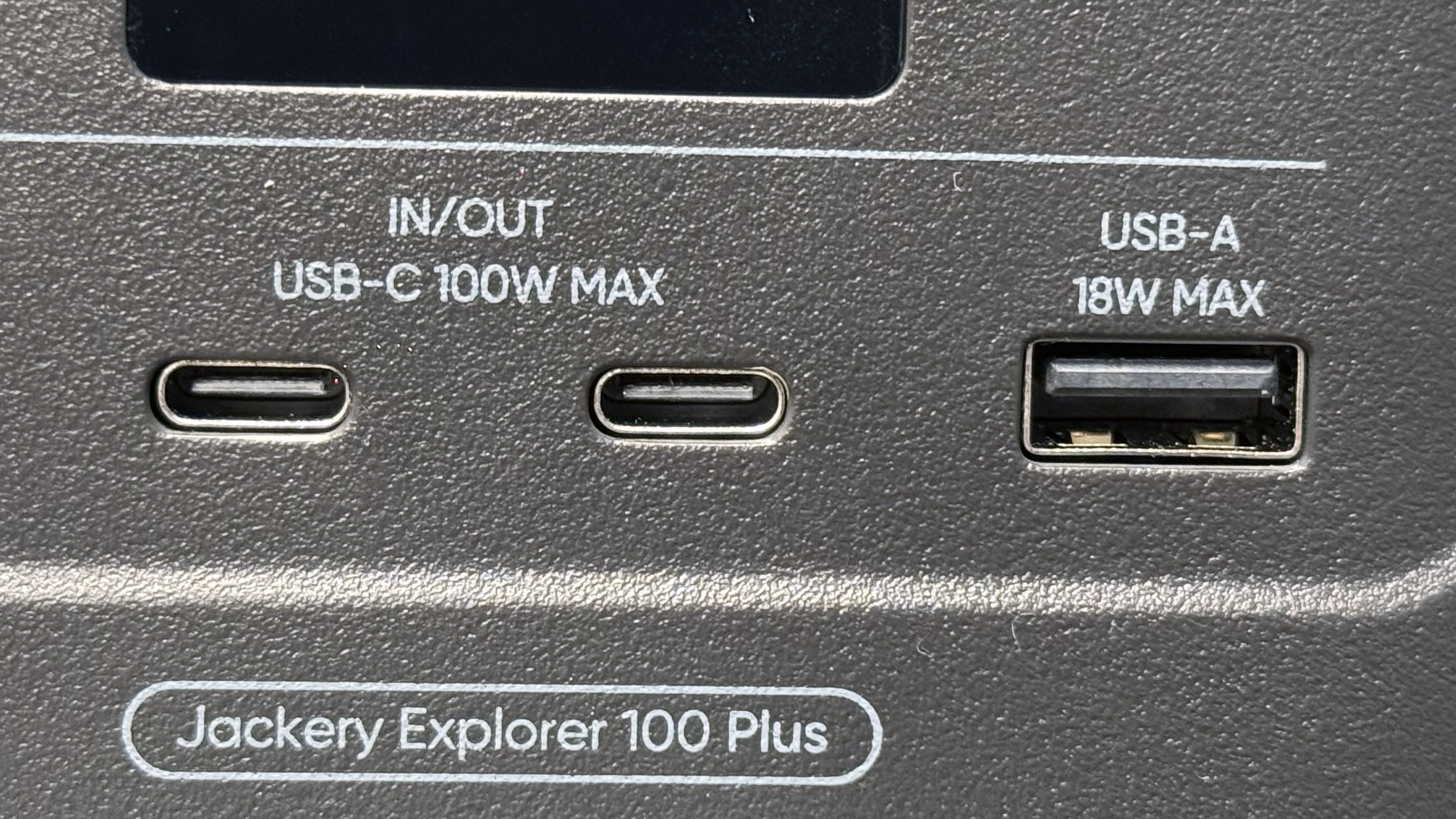
Missing 230V output
On a charger like this, I have to say I miss a 230V output with AC power. I realise that a built-in inverter causes some heat loss in the conversion, and that the emergency charger at hand will be too small for most sources that use 230V. But since there are still some laptops, 5G routers and other equipment that use a different type of power plug than USB-C, they would benefit from such an output – so they could use their own power supply.
However, the three USB ports are sufficient for all typical mobile phone charging needs in the outdoors and when travelling, and it’s only in exceptional cases that I miss anything else.
Charging with solar cells
Jackery makes a point of saying that the power station can be charged via a solar panel as an alternative to a USB-C charger. But since you can do the same with all other emergency chargers as well, I don’t really see the need to emphasise this. Apart from the fact that Jackery also offers solar cells, that is.
I got a SolarSaga 40W panel to test with, but now in the wintertime you don’t get any benefit from this. The panel can be left connected for several days without having done any significant impact on recharging the battery.
Jackery Explorer 100 Plus in practice
My own experience with the product is that it works as intended. I like the display that shows input and output power at all times and the remaining battery capacity.
The form factor is very nice when something is plugged in, as the product is completely stable. However, it’s not specified as weatherproof, so be careful when using it outdoors.
To compare, I bring up the Chargeasap Flash Pro Plus, which has a much smaller form factor. With an aluminium casing, it’s not as resistant to scratches, and I imagine it’s less resistant to drops. It has a battery with a portion of graphene in the electrodes for higher energy density, but at 92.5 Wt it still has a somewhat lower capacity than the Jackery battery. However, Chargeasap has an extra USB-C output, the three outputs range from 20-100 watts, and a USB-A output provides up to 50 watts.
It also has a built-in Magsafe wireless charger for iPhone and a separate magnetic charger for Apple Watch. The display shows the individual power of all outputs in use, as well as remaining capacity and battery temperature.
The Chargeasap charger, on the other hand, is 50 per cent more expensive, so considering what they both offer, I think Jackery is the better buy.
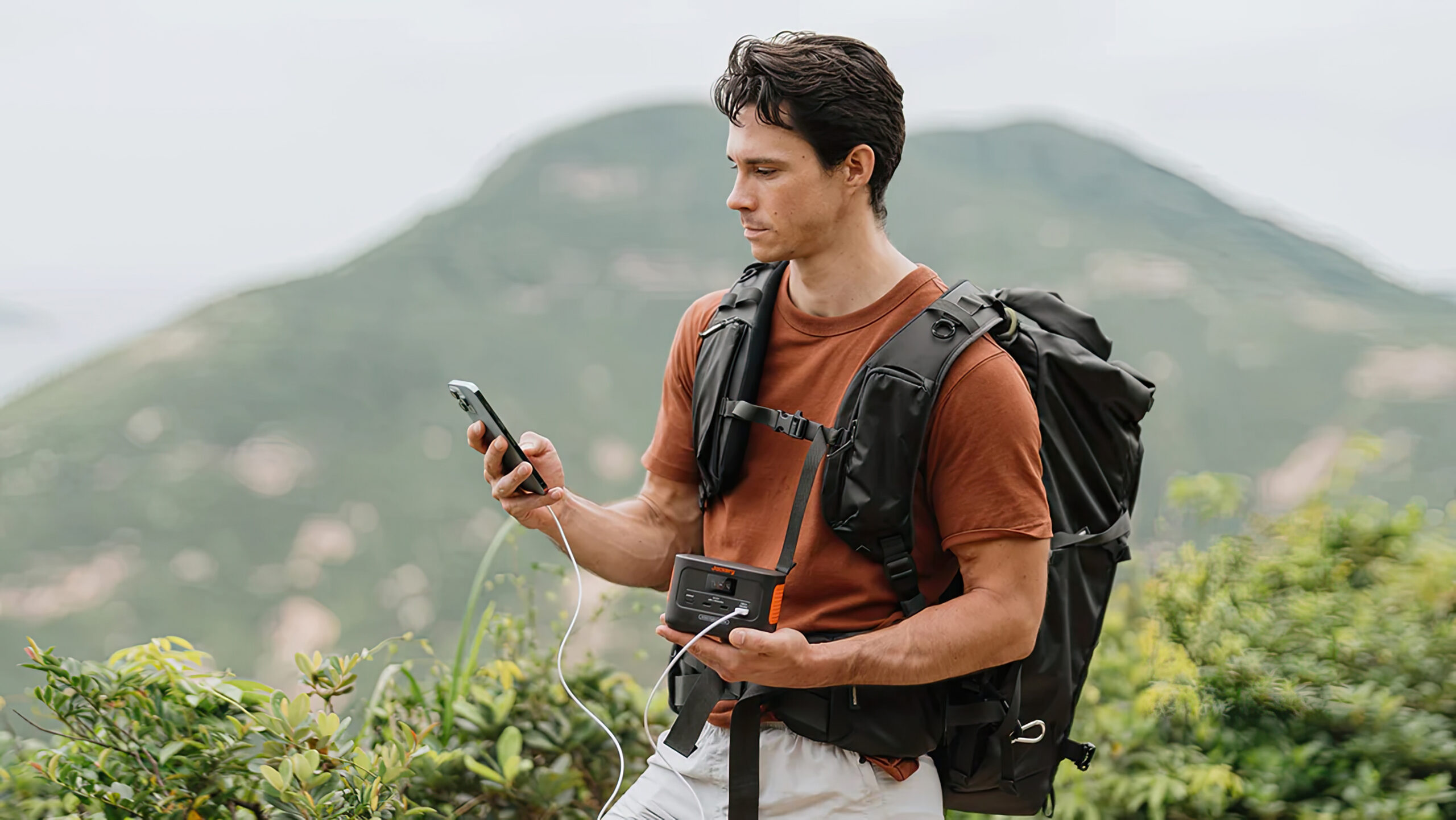
Conclusion
The Explorer 100 Plus is by far the smallest power station Jackery offers. However, it is very capable for an emergency charger, with a capacity just within the legal limits for what you can carry on board an aircraft.
All in all, the Jackery Explorer 100 Plus delivers solid performance, battery capacity and portability at an reasonable price. The size is compact enough and the weight light enough to be a good option for carrying extra power on the go. However, if you don’t have particularly battery-hungry gadgets, or you’re not going to be away for long periods of time, you may well want something pocket-sized.
We may miss an integrated power socket, but you get USB charging with a hefty capacity for most modern needs (over 100 watts). The battery is also solidly built and can withstand more cycles than normal. A highly recommended accessory for travellers or just generally tech-savvy outdoor enthusiasts.

179 €
Specifications
- Capacity: 99.2 Wh (31,000 mAh)
- Response time: 30 ms in case of power failure
- Outputs: 2 x 100W USB-C combined in/out, 18W USB-A
- Charging: USB-C, solar panel
- Control: N/A
- Battery life: 80% capacity after 2000 charge cycles
- Dimensions: 8.6 cm x 8.6 cm x 13 cm (W x H x D)
- Weight: 0.965 kg
- Web: jackery.com


